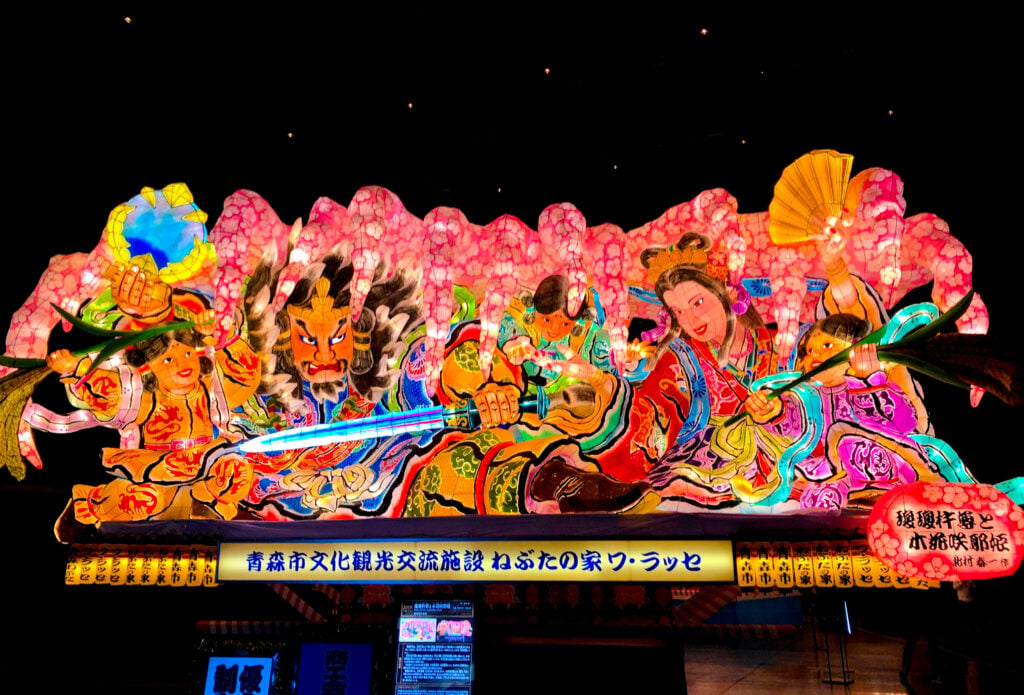Particles in Japanese are like the building blocks in a sentence and crucial for constructing sentences. In this article we will review some functions of the particles に/へ, で, と, から/まで, as well as the sentence final particles か/ね/よ.
This is the second article about basic particles in Japanese – make sure you check out the first article here where we cover は, の, を, が andも.
Let’s continue to review some commonly used particles in Japanese and their basic functions!
に(ni) and へ(e)
Main functions:
1. Indicates directionality
2. Indicates a fixed time
The particle に has two main functions. One is to indicate a direction/location. This can often be translated with the word “to” in English. For example:
(私は)明日学校に行く。
(Watashi wa) ashita gakkō ni iku.
I will go to school tomorrow.
You can also use へ instead of に, but only in the case of physical movement with words such as 行く(iku, to go), 来る (kuru, to come) or 帰る (kaeru, to return).
Furthermore, there is a subtle difference in that に emphasizes the destination, while へ emphasizes the path there. Personally I also feel that using へ is a more indirect and humble way of speaking compared to に.
*Note that the particle へ is pronounced “e” not “he”!
私の友だちは国へ帰る。
Watashi no tomodachi wa kuni e kaeru.
My friend is going to return to his/her country.
The following sentence is one where you can’t use へ:
(私は) 昨日、先生に本を返した。
(Watashi wa) kinō, sensei ni hon o kaeshita.
I returned a book to my teacher yesterday.
The second function of に is to indicate a fixed time an event takes place. You don’t use に together with words such as 今日 (kyō, today), 明日 (ashita, tomorrow) or 来週 (raishū, next week) because the date/time of such words is relative to the speaker’s location in time. For such words a rule of thumb is to not use a particle, or if not previously used in the sentence, use は instead of に.
(私は)木曜日に旅行に行く。
(Watashi wa) mokuyōbi ni ryokō ni iku.
On Thursday I’m going on a trip.
で(de)
Main functions:
1. Indicates a location an action/event takes place
2. Indicates a tool or means by which you perform an action.
First of all, で is used to describe a location where an action or event takes place. For example:
明日は図書館で勉強する。
Ashita wa toshokan de benkyō suru.
Tomorrow I will study at the library.
It is important to note that で is only used together with verbs that describe an action/event affiliated with the subject. Existential verbs such as ある/いる (aru/iru, to have/be/exist) or 住む (sumu, to live) do not describe an action and in these cases に is used instead of で. For example:
母は東京に住んでいる。
Haha wa Tokyo ni sundeiru.
Mom lives in Tokyo.
The second function of で is to indicate how the subject performs an action. Namely, what means, or tool does the subject use to perform a task. For example:
(私は)車で九州に行った。
(Watashi wa) kuruma de kyūshū ni itta.
I went to Kyūshū by car.
これは日本語で何ですか。
Kore wa nihongo de nan desuka.
What is this in Japanese? (Japanese is a means of communication so で is used.)

と(to)
Main functions:
1. Used to lump together nouns with the meaning “and”
2. Indicate who the subject is accompanied by.
3. Used as citation.
The particle と also has many functions. Let’s start with the most straightforward one: と is used between nouns with the meaning “and”. For example:
(私は)猫と犬がいる。
(Watashi wa) neko to inu ga iru.
I have a cat and a dog.
A common mistake is to use と as “and” when describing two actions/events. In such cases the て-form should be used instead. For example:
The wrong way:
日本へ行ったと、日本語を学んだ。
Nihon he itta to, nihongo o mananda.
The right way:
日本へ行って、日本語を学んだ。
Nihon e itte, nihongo o mananda.
I went to Japan and learned Japanese.
The second use of と is to indicate who the subject is accompanied by or who the subject is performing an action together with. For example:
先生と食べに行った。
Sensei to tabe ni itta.
I went to eat with my teacher.
三人の友達と旅行をした。
Sannin no tomodachi to ryokō o shita.
I went on a trip with three friends.
The third and final use of と is to cite who said/thought/felt something. Usually it’s used in the following form: [The person in question] は [Quotation in plain form] と[thought/said/felt]. For example:
友達はパーティーに来ないと言っていた。
Tomodachi wa pātī ni konai to itteita.
My friend said that he/she isn’t coming to the party.
(私は)いつか日本に行きたいと思っている。
(Watashi wa) itsuka nihon ni ikitai to omotteiru.
(My opinion is that) someday, I want to go to Japan.
から(kara) and まで(made)
Main functions: used to describe a route from A to B.
The particles から “from” and まで “to, until” are often used in a sentence to describe a route from A to B in either time or space. They can be used together, but don’t always have to be. For example:
うちから大学まではバスで1時間ぐらいだ。
Uchi kara daigaku made wa basu de ichi jikan gurai da.
It takes about one hour by bus from my house to the university.
この店は夜の9時まで空いている。
kono mise wa yoru no kuji made aiteiru.
This shop is open until 9 o’clock in the evening.
か(ka), ね(ne) and よ(yo)
Main functions: Sentence ending particles to ask a question and seek/give confirmation.
Finally let’s talk a little bit about the sentence ending particles か, ね and よ.
The particle か is basically a question mark. Putting a か at the end of a sentence means that you are asking something.
これは田中さんの本ですか。
Kore wa Tanaka-san no hon desu ka.
Is this your book, Tanaka?
Note that you don’t have to use か to ask a question. You can also raise the pitch accent on the last syllable in a sentence and it will automatically become a question. This is a slightly less formal way of talking compared to using か, though.
Using ね at the end of a sentence means that you are either seeking the listener’s attention or confirmation. Unless you completely disagree with the statement, it is customary to also answer with the particle ね.
今日は暑いですね。
Kyō wa atsui desu ne.
Today is hot, huh?
そうですね。
Sō desu ne.
Yeah it really is.
Finally, using よ at the end of a sentence means that you are telling the listener something he/she presumably doesn’t know about, or giving your permission to do something.
Example 1:
今日は雨だよ。
Kyō wa ame da yo.
It’s going to rain today (assuming the person didn’t know that)
Example 2:
トイレを使ってもいいですか。
Toire o tsukatte mo ii desu ka.
Can I use the bathroom?
いいですよ。
Ii desu yo.
Sure.
In this article we have introduced some functions of the most common particles in Japanese: に/へ, で, と, から/まで and か/ね/よ. Understanding these particles and how they are used will help you understand and produce basic Japanese sentences. Did you find the articles helpful? If you have questions or want to add some information, comment below!
If you are interested in learning more Japanese, feel free to check out our blog. If you have any questions about moving to Japan and study Japanese, don’t hesitate to contact us!













